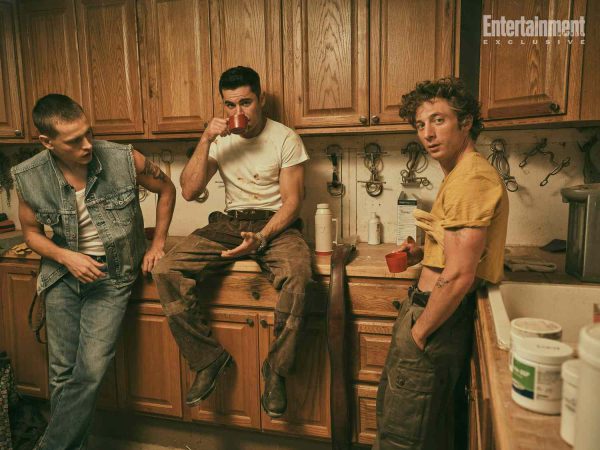Is Barbarian The Scariest Movie Of The Year?
The story of a seedy AirBnB with a dark secret
Critics are raving and audiences are shaking; Barbarian, a horror film directed by Zach Crugger, has made serious waves in the cultural sphere over the past few weeks. This 2022 horror frenzy follows a young researcher, played by Georgina Campbell, who must take shelter in an AirBnb that does not belong to her. As the days draw by, she finds herself trapped in a situation that’s bigger than anything she’s ever known. With its dizzying cinematography, haunting score and compelling performances, Barbarian shapes up to be one of the scariest films of the year.
The concept of a naive visitor trapped in a spooky place has been the foundation for horror films since the beginning. Classics such as Friday the 13th or Suspiria have explored this trope through boogeymen and the supernatural, but none have gone as far as Barbarian. Within thirty minutes, every expectation raised by the audience is trampled on in favor of a horrifying twist that completely recontextualizes the nature of the plot. It begins by using common cliches such as the cheap jumpscare, doors opening by themselves, or the dark basement. However, as the film progresses, it begins to employ subtle ways of building tension.
The bass of the frantic score builds up, pulsating with every step a character takes towards unfamiliar territory. The camera shakes, swings, and spins through each intense moment. Each character’s paralyzing expression of terror will swallow up the screen, adding to the discomfort and the humanity of their hopeless situation. An unexpected tinge of comedy may follow a scene–a moment of comfort–before being ripped away by the hands of incoming danger.
Nothing is held back; the film is an audiovisual warfare. By the end, this little concept of a scatterbrained woman stuck in a strange place is torn to shreds. The audience bears witness to the unfettered hell engulfing every last character as they scramble to evade horrors beyond their comprehension.
Spliced in between the horror are pieces of piercing social commentary. Taking place in Detroit, the film makes thought-provoking statements on the justice system, privilege, and most shockingly, the Reagan administration. As everything comes together, the film makes every effort to demonstrate why these events occurred in the first place. These characters aren’t stuck because of their own personal failings, the film argues, but because they’ve been failed by society.
In line with the film’s habit of breaking conventional horror tropes, it employs a non-linear method of storytelling. Mundane plot threads established early on in the film are reincorporated to sell some of the bigger twists. Entire character arcs are established halfway through the film, and yet they’re weaved into the greater plot with such finesse that it never feels jarring.
The power of each character’s performance, especially from Georgina Campbell, works to convey the vulnerability of their situation in an emotionally arresting manner. There’s a scene in the movie where the protagonist must confront their greatest fears, and it’s not just the unsettling score and claustrophobic cinematography that makes the scene, but the utter anxiety frozen on her face. The subtleties of each facial expression give the film the third dimension needed to tell such a chilling tale.
If there is one major critique, it’s that the film can come across as unrealistic. The grounded premise is dismantled by the more supernatural elements of the story, which is not a bad thing on its own, but the rate at which the story spirals into pure fantasy and chaos can come across as comedic to some. Furthermore, there are more than a few scenes where characters will survive life-threatening injuries that no regular person would be able to sustain. For the sake of keeping the action going, it is necessary to have some of this, but it can feel cheap when it’s clear the film wants you to worry about the fate of a character when it’s completely obvious they’re going to survive anyways. There is one instance where the film subverts this expectation, but this isn’t enough to excuse all the other times it doesn’t subvert this expectation.
At last, while the film does make some effective critiques of current society, it handles a particular issue with clumsy deliberation. The film introduces a morally ambiguous character who is made to be insufferable for the sole purpose of introducing a redemption arc later on. However, the severity of this character’s actions runs so deep that it feels as if the redemption arc is unwarranted. As a result, it may come across as offensive to some for the film to connotatively suggest such a person deserves salvation. The movie does manage to compensate for its clumsiness near the end, but why was it there in the first place?
Even if Barbarian struggles with some of its social commentary and pacing, it doesn’t diminish how horrifying it is. There are scenes in it that are so disturbing, shocking and downright disgusting that it makes the entire experience worth a watch. If someone wanted to ignore the social commentary, they easily could. As a popcorn flick, it works wonders. There’s never a calm moment in Barbarian. Similar to the concept of barbarism, the film evokes that same sense of intensity. It breaks all the rules with reckless abandon and throws the audience headfirst into a hellish experience unlike any other. There’s no kindness in its actions. As any great horror movie should, all it cares about is scaring you to death, and best believe it will.



![Amplify. (n.d.). [Digital Image]. MILES KANE releases new album ‘CHANGE THE SHOW’ via BMG. Retrieved February 15, 2022 from https://amnplify.com.au/miles-kane-releases-new-album-change-the-show-via-bmg/](https://lrhslightningflash.com/wp-content/uploads/2022/06/miles-e1654698972647-475x267.jpg)
![Swift, T. (2021). Red (Taylors Version) [Recorded by T. Swift]. Red (Taylors Version) [CD]. Republic Records. (2021).](https://lrhslightningflash.com/wp-content/uploads/2022/03/temp-e1646844013390-475x292.jpg)

![Lvrn/Interscope. (2021) [Still Over It Album Cover] Summer Walker.com. https://www.summerwalkermusic.com/](https://lrhslightningflash.com/wp-content/uploads/2022/06/https___hypebeast.com_image_2021_11_summer-walker-still-over-it-album-stream-0a_auto_x2-e1654784349235-475x267.png)
